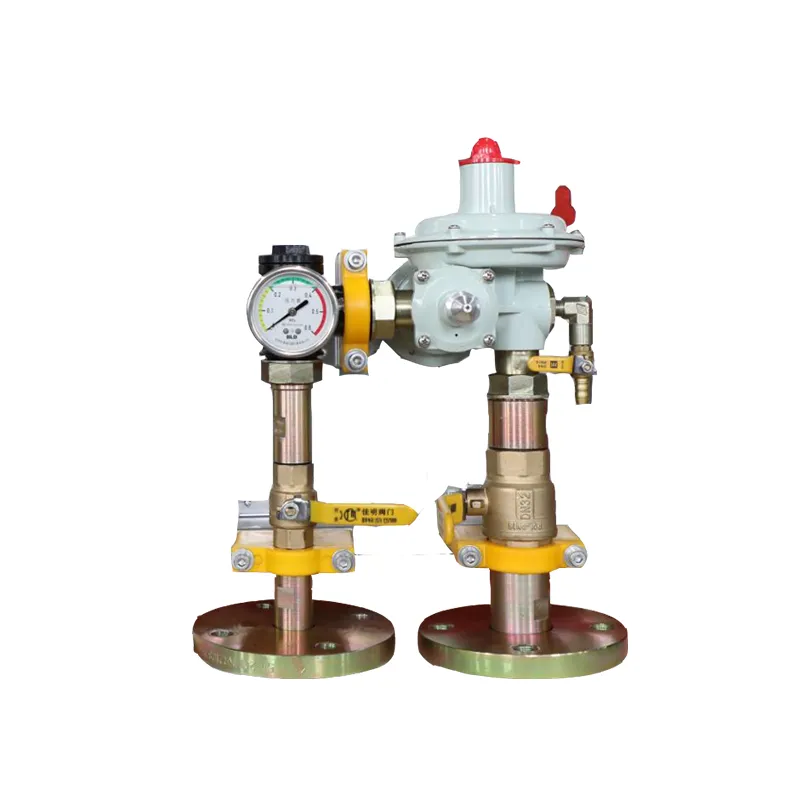
Nov . 10, 2024 10:28
Back to list
Gas Pressure Regulator Valve Overview and Applications for Efficient Control Systems
Understanding Gas Pressure Regulating Valves
Gas pressure regulating valves, often referred to as pressure regulators, play a crucial role in various industries, from residential heating systems to industrial applications. These devices are designed to control and maintain the pressure of gas flowing through pipelines, ensuring safety, efficiency, and performance.
What is a Gas Pressure Regulating Valve?
A gas pressure regulating valve is a mechanical device that automatically adjusts the pressure of gas as it passes from a high-pressure supply to a lower pressure that is suitable for use in appliances or industrial applications. The primary function of these valves is to reduce the high pressure from gas storage tanks or pipelines to a safe and usable pressure for equipment and appliances.
How Do Pressure Regulators Work?
Pressure regulators operate using a relatively simple mechanism. When gas enters a regulator, it pushes against a diaphragm. This diaphragm is connected to a spring whose tension can be adjusted. The spring's tension determines the setpoint pressure—the pressure that needs to be maintained downstream of the valve.
As gas flows through the regulator, if the downstream pressure rises above this setpoint, the diaphragm moves against the spring's force, which closes off the valve, thus reducing the flow of gas. Conversely, if the downstream pressure drops below the setpoint, the diaphragm allows more gas to flow through the valve. This continuous adjustment maintains a consistent pressure, thereby ensuring the safe operation of connected devices or systems.
Types of Gas Pressure Regulators
.
1. Single-Stage Regulators These are designed to reduce pressure from a high-pressure source to a lower pressure in one step. They are suitable for applications where slight pressure fluctuations are acceptable. Common uses include small-scale heating and cooking applications.
صمام منظم ضغط الغاز

2. Two-Stage Regulators These regulators provide more precise control over fluctuations in pressure. The first stage reduces high pressure to an intermediate level, and the second stage further reduces it to the desired final pressure. This type is ideal for applications where consistent pressure is critical, such as in industrial processes or larger heating systems.
3. Integral Regulators These consist of a regulator integrated into a specific device, such as a gas meter. They are designed to simplify installation and are often used in residential settings.
4. Adjustable Regulators These allow users to modify the output pressure. This flexibility makes them suitable for various applications where pressure needs to be adjusted based on specific requirements, such as in laboratories or experimental setups.
Importance of Pressure Regulation
The importance of gas pressure regulation cannot be overstated. Many appliances, from heaters and stoves to gas-powered machinery, rely on a consistent and safe gas supply. Without proper regulation, high pressure could lead to equipment failures, accidents, or even explosions. Effective pressure regulation ensures efficiency in energy consumption, extends the life of equipment, and contributes to the overall safety of gas handling and utilization processes.
Installation and Maintenance
When installing gas pressure regulators, it is essential to follow the manufacturer's guidelines to ensure safe and optimal performance. Proper placement, suitable line sizing, and connections are crucial to avoiding leaks and maintaining system integrity.
Regular maintenance is also vital. This includes inspecting the regulator for any signs of wear and tear, checking for leaks, and verifying that the pressure settings remain accurate. A well-maintained regulator not only ensures safety but also improves system efficiency and reduces operational costs.
Conclusion
Gas pressure regulating valves are indispensable components in the management of gas supply systems. By ensuring that gas is delivered at safe and usable pressures, these devices protect both equipment and personnel. As gas applications continue to evolve and expand, the role of pressure regulators will remain fundamental to the safe and efficient use of gas in everyday life and industry. Proper understanding, installation, and maintenance of these regulators are essential for harnessing their full potential and ensuring safety in gas applications.
Latest news
-
Safety Valve Spring-Loaded Design Overpressure ProtectionNewsJul.25,2025
-
Precision Voltage Regulator AC5 Accuracy Grade PerformanceNewsJul.25,2025
-
Natural Gas Pressure Regulating Skid Industrial Pipeline ApplicationsNewsJul.25,2025
-
Natural Gas Filter Stainless Steel Mesh Element DesignNewsJul.25,2025
-
Gas Pressure Regulator Valve Direct-Acting Spring-Loaded DesignNewsJul.25,2025
-
Decompression Equipment Multi-Stage Heat Exchange System DesignNewsJul.25,2025

